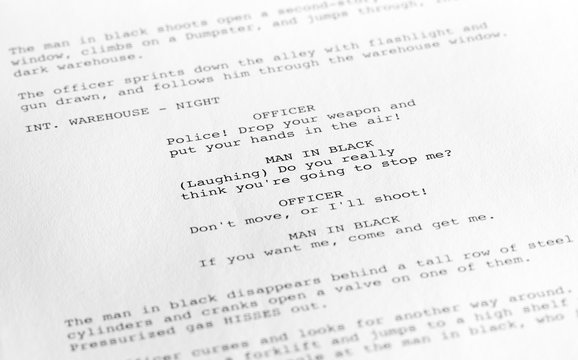1. Understand Your Characters:
Before penning a single line of dialogue, delve deep into the personalities, motivations, and backgrounds of your characters. Understanding their quirks, fears, and desires informs the way they speak. Authentic dialogue arises from a profound knowledge of the characters’ voices and unique perspectives.
2. Brevity is Key:
Short films thrive on conciseness, and this principle extends to dialogue. Embrace brevity without sacrificing substance. Each line should serve a purpose, whether it reveals character traits, advances the plot, or adds emotional depth. Trim unnecessary words to ensure that every utterance resonates with impact.
3. Subtext and Nuance:
Infuse your dialogue with subtext and nuance to add depth and complexity. Characters often convey more through what is left unsaid or subtly implied. Encourage viewers to read between the lines, creating a layered and immersive experience that invites interpretation.
4. Establish Unique Voices:
Distinguish each character’s voice to create a mosaic of perspectives. Consider factors such as background, education, and personality when shaping their speech patterns. A diverse range of voices adds authenticity to the dialogue, making characters memorable and relatable.
5. Show, Don’t Tell:
Allow actions and gestures to complement dialogue, enhancing the overall storytelling. Rather than explicitly stating emotions or intentions, explore ways to convey them through character actions. Actions often speak louder than words and can imbue dialogue with additional layers of meaning.
6. Capture Realistic Rhythms:
Listen to the rhythms and cadences of everyday speech to capture a realistic flow in your dialogue. Pay attention to the natural pauses, hesitations, and interruptions that characterize authentic conversations. Mimicking these rhythms creates a sense of believability in your characters’ interactions.
7. Inject Conflict and Tension:
Dialogue becomes dynamic when it crackles with conflict and tension. Introduce opposing viewpoints, hidden agendas, or unresolved conflicts to infuse scenes with dramatic energy. The ebb and flow of tension in dialogue can drive the narrative forward and captivate the audience.
8. Consider Context and Tone:
The context in which dialogue unfolds shapes its impact. Whether it’s a heated argument, a tender moment, or a comedic exchange, the tone should align with the overarching mood of the scene. Be mindful of the emotional beats within the short film and adjust dialogue accordingly.
9. Avoid Exposition Dumps:
Resist the temptation to use dialogue as a vehicle for excessive exposition. Instead, integrate information seamlessly into the narrative through character actions, visuals, or subtle cues. Trust the audience to pick up on nuances without resorting to heavy-handed explanations.
10. Invite Collaboration:
If possible, collaborate with actors during the scriptwriting process. Actors bring a unique understanding of their characters, and their insights can enrich the dialogue. An open dialogue between the writer and performers can lead to nuanced, authentic performances that elevate the overall quality of the short film.
Writing dialogue for a short film is an art form that requires a keen understanding of character, brevity, and narrative dynamics. By delving into your characters’ depths, embracing brevity, and infusing dialogue with subtext, you can create conversations that resonate with authenticity and impact. Remember, every line of dialogue is an opportunity to deepen character connections, advance the plot, and evoke emotion.
As you embark on the journey of crafting dialogue for your short film, savor the richness of language and use it as a powerful tool to immerse your audience in the unique world you’ve created.


